Before Disney dominated the theme park landscape and OSHA regulations took the real danger out of thrill rides, local amusement parks were the go-to destinations for summer fun across America. Those magical places where you begged your parents to take you on weekends, with their intoxicating mix of cotton candy scents, calliope music, and heart-stopping rides, have largely vanished into the mists of time. For just a few dollars, we experienced attractions that would never pass safety inspections today—and we loved every terrifying minute of them.
1. Riverview Park, Chicago (1904-1967)
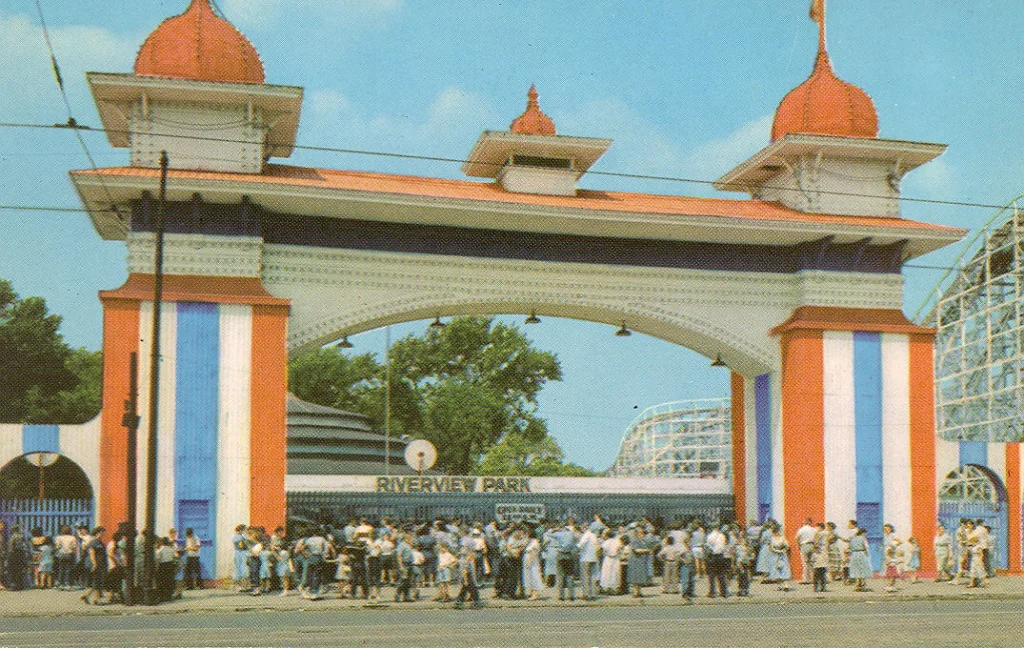
The “world’s largest amusement park” in its heyday was Chicago’s playground for over six decades, offering more than 120 attractions spread across 74 acres. Riverview’s infamous “Pair-O-Chutes” tower dropped riders 13 stories in a free-fall that felt like jumping from a building, creating a sensation of certain doom before parachutes deployed to slow the descent. The legendary “Bobs” roller coaster featured a hair-raising 85-foot initial drop and reached speeds of 50 mph with minimal safety restraints—just a single lap bar that riders desperately clung to while being violently thrown around wooden cars. WTTW digs into the more obscure history that surrounds this venue.
The park’s “Aladdin’s Castle” fun house featured the notorious spinning wooden barrel that tumbled countless visitors, and moving floors that sent skirts flying upward (while men paid to watch from a special booth until public outcry shut it down). Riverview’s sudden closure in 1967 broke Chicago’s heart, with many residents learning about it from newspaper headlines the morning after the final visitors left, never suspecting they were experiencing its magic for the last time. Today, the site is occupied by a shopping center and police station, with only a small commemorative plaque marking where generations of Chicagoans experienced summer thrills that children today can hardly imagine.
2. Euclid Beach Park, Cleveland (1895-1969)
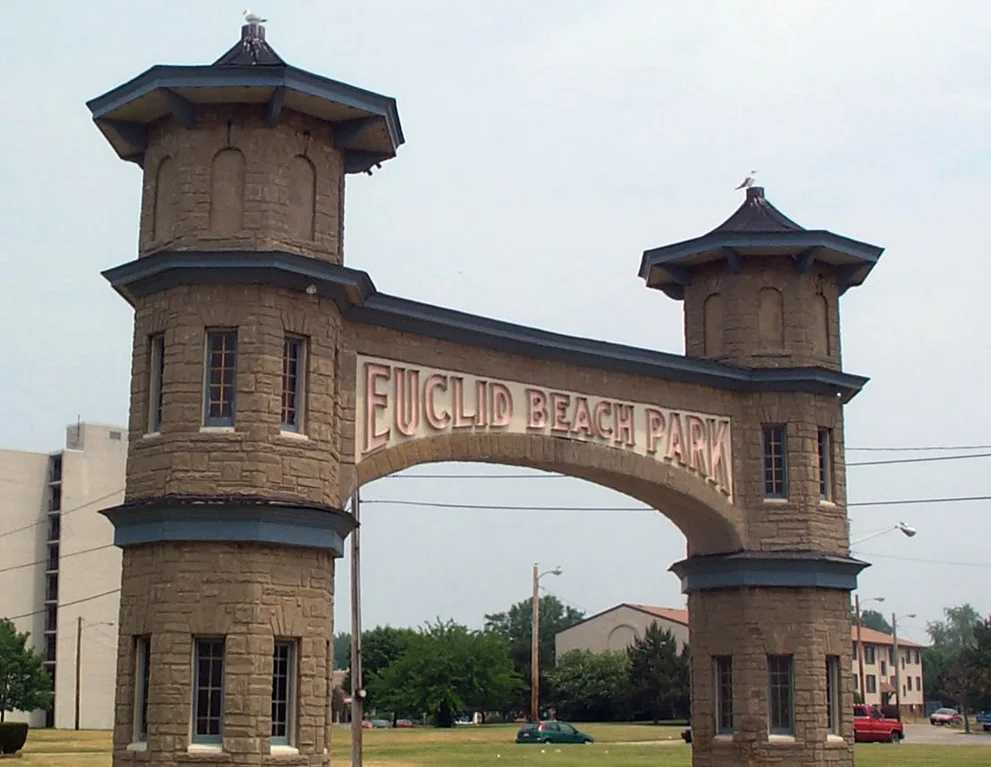
This beloved Lake Erie destination was renowned for its pristine grounds, unique rides, and the famous Euclid Beach popcorn balls and taffy kisses that locals still crave decades later. The park’s “Flying Turns” was a trackless wooden bobsled roller coaster where toboggan-like cars careened down chutes at alarming speeds, freely sliding up the walls with centrifugal force being the only thing preventing riders from flying out. The “Thriller” coaster featured a terrifying first hill that was so steep, riders swore they were going straight down, with many closing their eyes through the entire ride that inspectors today would immediately condemn. Cleveland Historical dives into the evolution in appearance and policies this location underwent.
Euclid Beach’s “Laff in the Dark” ride was notoriously frightening, with its pitch-black environment and ghoulish figures that would suddenly appear inches from riders’ faces, causing screams that could be heard outside the building. When Euclid Beach closed after 74 seasons, heartbroken Clevelanders salvaged what they could—the iconic entrance arch was preserved, the carousel was eventually restored at the Cleveland History Center, and a food truck now recreates the park’s famous treats. Those who remember dancing at the ballroom, riding the Rocket Ships, or cooling off with a frozen whip on hot summer days still speak of Euclid Beach with a reverence usually reserved for childhood homes.
3. Palisades Amusement Park, New Jersey (1898-1971)
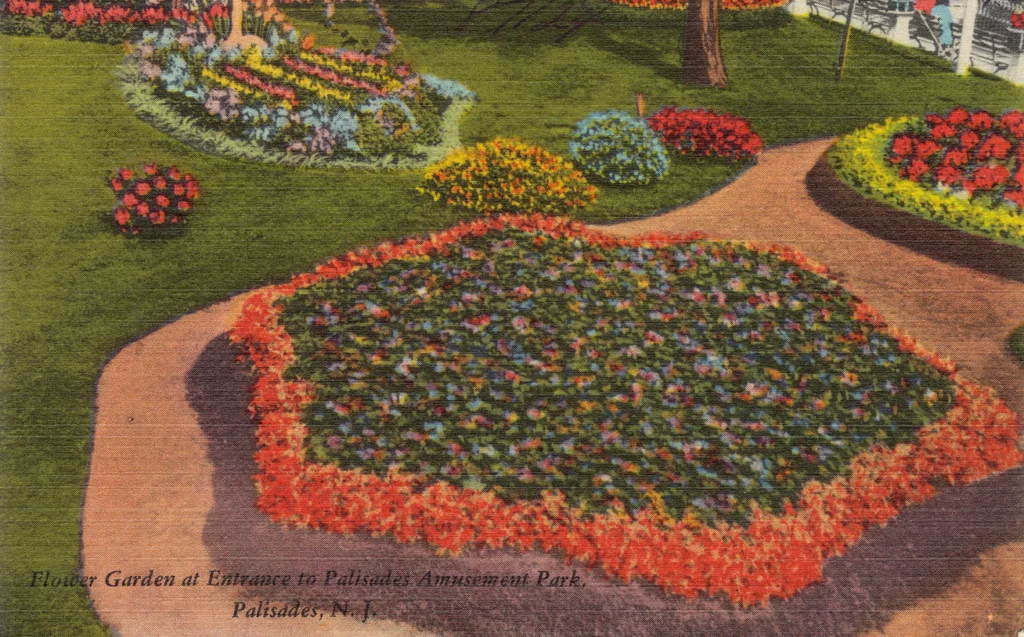
Perched on the New Jersey Palisades overlooking the Hudson River and Manhattan skyline, this compact 38-acre park packed in more thrills per square foot than seemed physically possible. The “Cyclone” roller coaster featured stomach-churning drops and turns so intense that riders frequently lost personal items, creating a “treasure trove” of watches, glasses, and loose change that accumulated beneath its structure. The salt water pool—allegedly the largest in the world—became a legendary summer hotspot after being immortalized in Freddy Cannon’s 1962 hit song “Palisades Park,” where generations of teenagers flirted and showed off diving skills under the watchful eyes of lifeguards who seemed more interested in their whistles than actual safety. PIX11 mourns the obscurity that this venue seems to have fallen into.
Palisades Park’s free-fall ride “The Parachute Jump” was a particular favorite, dropping riders with heart-stopping suddenness before deploying parachutes that sometimes opened unevenly, causing terrifying tilts that had riders questioning their decision-making abilities. When developers announced plans to replace the park with high-rise apartments in 1971, the ensuing public outcry couldn’t save this beloved institution where families had created memories for seven decades. Today, luxury condominiums stand where once screams of delight filled the air, though Bergen County residents of a certain age still debate which ride was scariest and whether the world’s best Belgian waffles were indeed found at the Palisades food stands.
4. Idora Park, Youngstown, Ohio (1899-1984)
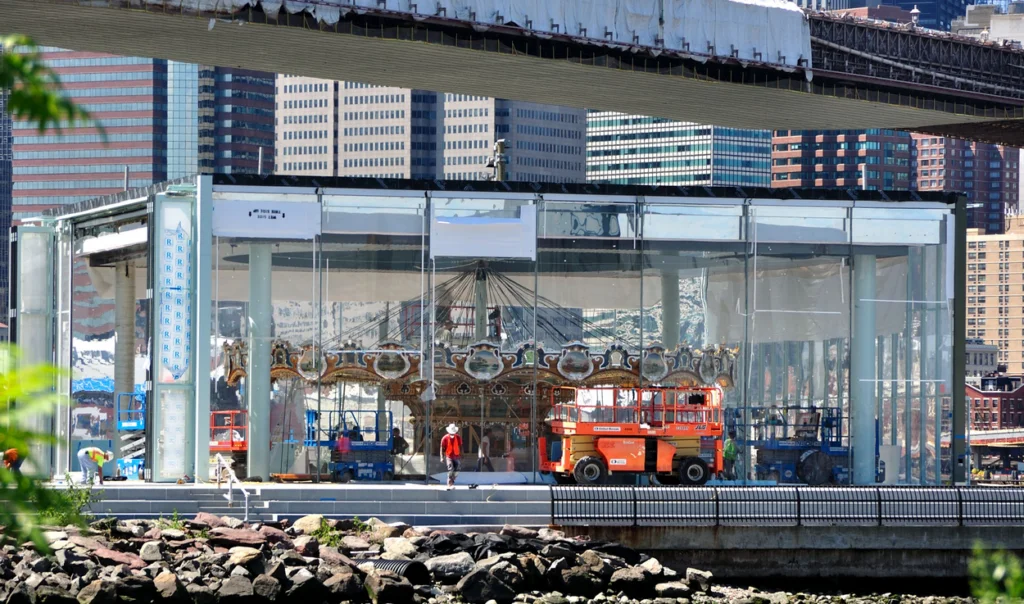
This blue-collar gem served as the recreational heart of steel town Youngstown, earning its nickname “Youngstown’s Million Dollar Playground” despite the decidedly working-class crowds it attracted. The “Wildcat” roller coaster was renowned for its jarring roughness that rattled teeth and bruised ribs, yet somehow made riders immediately want to get back in line for another bone-crushing journey. The park’s “Killer Coaster,” officially named “Jack Rabbit,” featured a unique trick track section where cars slid sideways, creating a sensation that you were about to derail—which occasionally didn’t seem far from the truth when wooden supports visibly flexed under the strain.
Idora’s massive swimming pool offered welcome relief from Ohio’s humid summers and the nearby mill’s constant heat, while the ballroom hosted every major big band of the era from Glenn Miller to Tommy Dorsey. The park’s heartbreaking end came after a devastating fire on April 26, 1984, destroyed the Wildcat coaster and several other beloved attractions, dealing a fatal blow to an operation already struggling from Youngstown’s economic devastation following the collapse of the steel industry. Though abandoned for decades, Idora Park refuses to be forgotten—former patrons still gather for reunions, and the park’s hand-carved carousel was saved and restored, now delighting new generations at Brooklyn’s Jane’s Carousel.
5. Pontchartrain Beach, New Orleans (1928-1983)
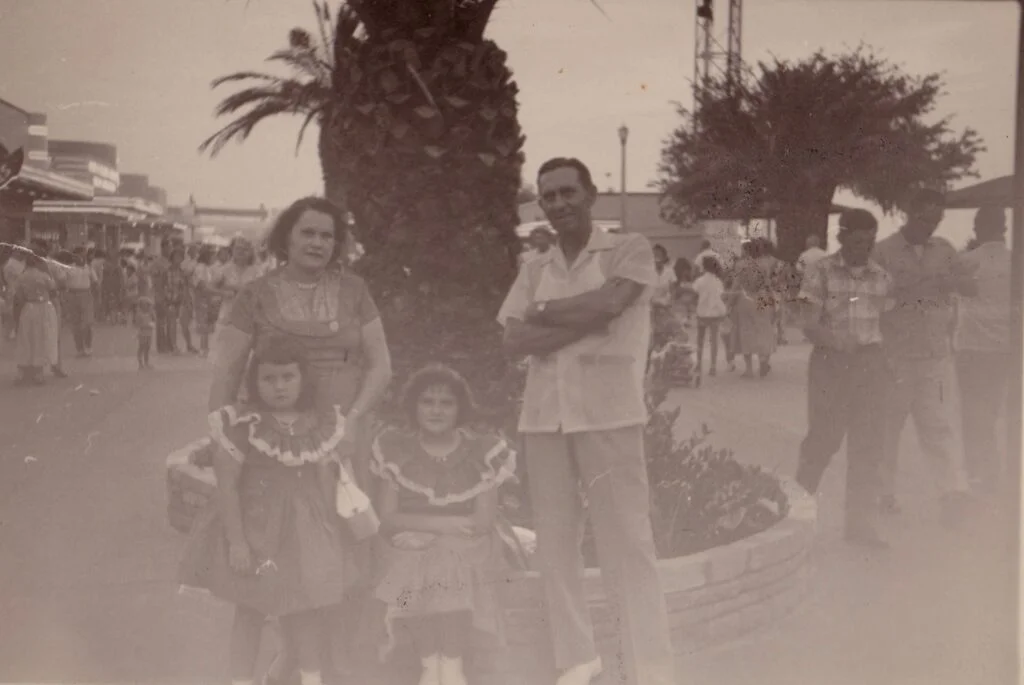
This Lake Pontchartrain destination served as New Orleans’ answer to Coney Island, offering respite from the Gulf Coast heat with lake breezes and water-adjacent thrills. The “Zephyr” roller coaster became notorious for its wild side-to-side action that felt genuinely dangerous even by the standards of wooden coasters, with riders reporting the entire structure would visibly shake during operation. The “Wild Maus” coaster featured hairpin turns with minimal banking that convinced riders they were about to fly off the track, creating a psychological thrill that modern, more predictable coasters rarely achieve.
The “Haunted House” dark ride earned legendary status by employing live actors alongside mechanical scares, with employees who took sadistic pleasure in timing their appearances for maximum screams—often targeting couples who thought the darkness provided makeout opportunities. Pontchartrain Beach’s closure hit especially hard for locals who treasured memories of concerts at the adjacent beach (where Elvis Presley performed early in his career), beauty contests that launched modeling careers, and the annual “Kiddies’ Day” when underserved children received free admission, ice cream, and rides. Though nothing remains of the original park today, the memories remain so powerful that periodic “Pontchartrain Beach for a Day” revival events draw thousands of nostalgic former patrons.
6. Rocky Point Park, Rhode Island (1847-1995)
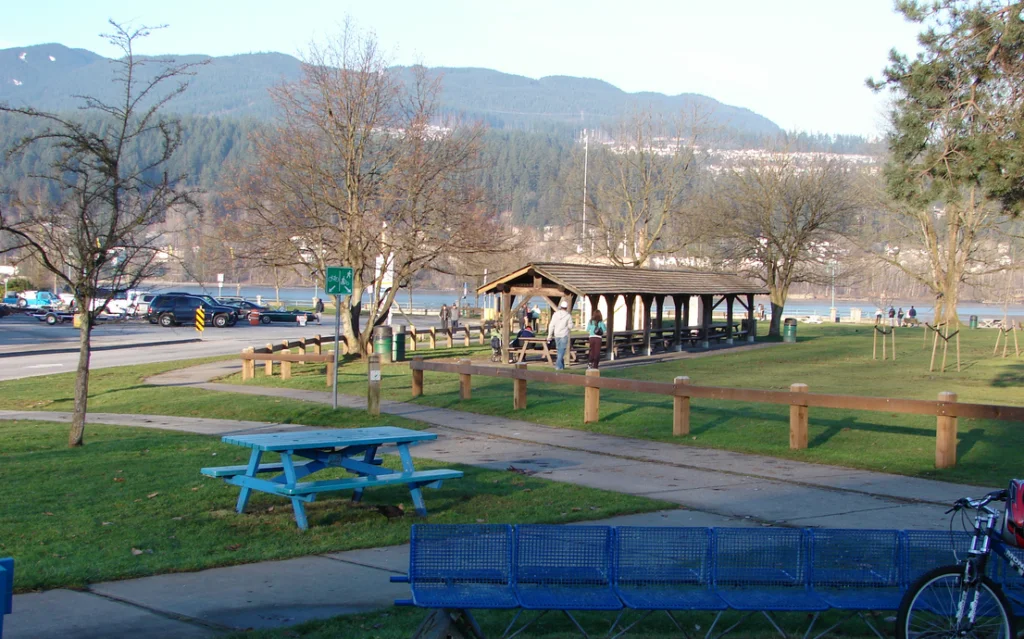
This Rhode Island institution on Narragansett Bay survived an astonishing 148 years before finally closing, making it one of America’s oldest amusement parks and a multi-generational tradition for New England families. The notorious “House of Horrors” dark ride featured a heart-stopping moment when cars suddenly plunged down a pitch-black drop, causing riders to believe they were falling to certain doom—a sensation so frightening that medical personnel occasionally had to assist guests who fainted. The “Skyliner” roller coaster provided not just thrills but spectacular views of the bay, though riders often kept their eyes firmly shut as the rickety wooden structure swayed alarmingly in strong coastal winds.
Rocky Point’s famous shore dinner hall served legendary clam cakes and chowder that locals still try to replicate from memory, while the enormous saltwater pool allowed visitors to swim without braving the bay’s unpredictable currents. The park’s emotional connection to Rhode Islanders was so profound that its 1995 bankruptcy and closure felt like losing a family member, with stunned locals gathering to watch the demolition of rides they’d enjoyed their entire lives. Today, the property has become Rocky Point State Park, where walking trails sometimes reveal surprising remnants of former attractions, allowing visitors to stand where the midway once bustled with crowds and imagine the phantom sounds of the carousel and screams from the Musik Express.
7. Paragon Park, Nantasket Beach, Massachusetts (1905-1984)
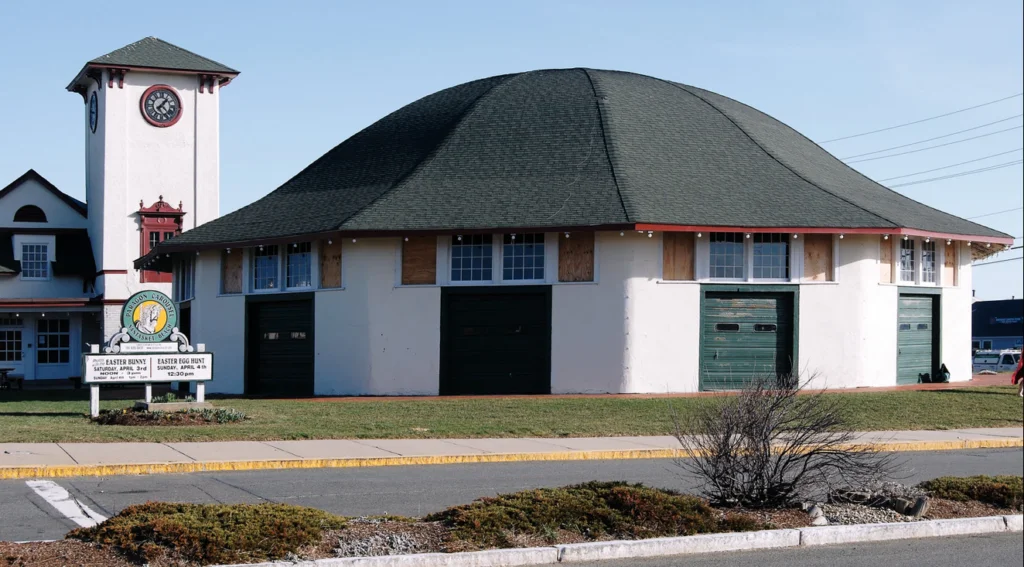
This New England coastal gem combined oceanfront majesty with mechanical thrills, becoming the centerpiece of what was once called “the finest beach in the world.” The “Giant Coaster” (later renamed “The Giant”) was one of the tallest roller coasters in the country when built in 1917, offering views of the Atlantic Ocean from its imposing 98-foot height before plunging riders down at speeds that felt criminally dangerous for a wooden structure of its age. The “Tunnel of Love” boat ride was notoriously more scary than romantic, with sudden drops and unexpected animatronic figures that caused more screaming than kissing—though many couples pretended to be frightened as an excuse to grab onto each other.
Paragon’s elaborate carousel, hand-carved by German craftsmen with stunning detail, became so beloved that when the park closed, local residents organized fundraising efforts to purchase and preserve it rather than see it auctioned off to collectors. The park’s clock tower and grand entrance welcomed generations of Bostonians who would arrive via the Nantasket steamboats for day trips, creating summer memories of saltwater taffy, fried clams, and rides that seemed to defy both gravity and common sense. Today, condominiums occupy most of the former park grounds, but the restored carousel still spins in its original location, allowing grandparents to share a small piece of their childhood with grandchildren who can hardly believe the tales of the wild, unregulated rides that once surrounded it.
8. Olympic Park, Irvington/Maplewood, New Jersey (1887-1965)
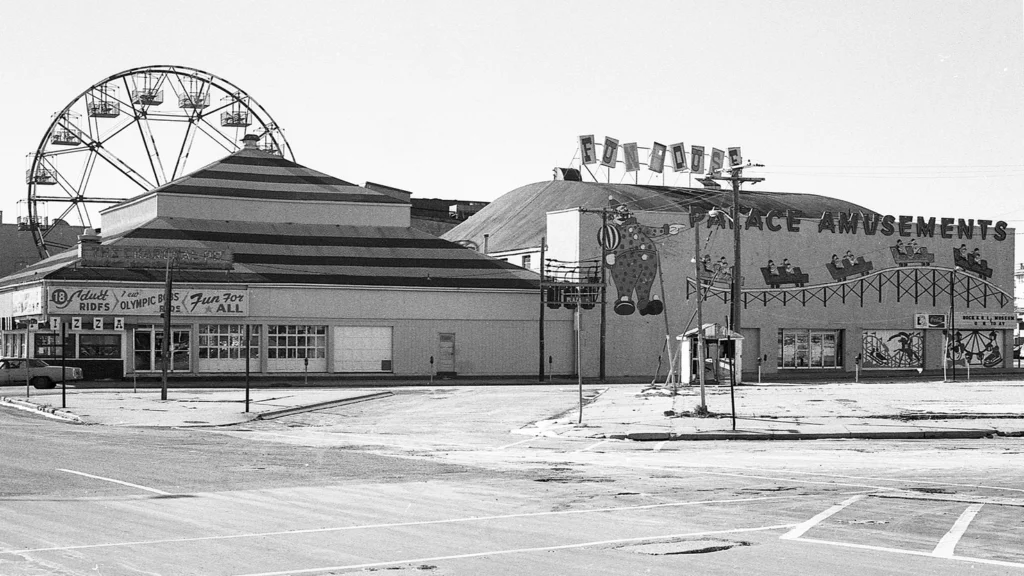
This beloved New Jersey destination straddling the Irvington/Maplewood border provided summer entertainment for nearly eight decades, becoming particularly known for its massive swimming pool that was marketed as “America’s largest pool built above ground.” The “Tornado” roller coaster became infamous for its violently rough ride that left bruises and sore necks, with wooden supports that visibly shook as cars thundered by—concerning to watch but thrilling to experience. The “Skyrocket” coaster featured an unusually steep first drop that had riders convinced they were going vertical, creating a sensation of weightlessness that modern coasters with their sophisticated restraints can’t replicate.
Olympic’s “Tunnel of Love” was particularly memorable for the employee stationed inside who would occasionally grab ankles of unsuspecting passengers, causing screams that echoed throughout the dark building. The park’s sudden demise came as a shock to regular patrons, with owner Henry Guenther citing increasing “rowdyism” and changing demographics as factors in his decision to close and sell the valuable property for housing development. Former visitors still gather at reunions to share memories of spending entire summer days at Olympic for a single admission price, moving from the crystal pool to the penny arcade to the salt water taffy stand where pulling the fresh candy was a mesmerizing sideshow in itself.
9. Elitch Gardens, Denver (Original Location 1890-1994)
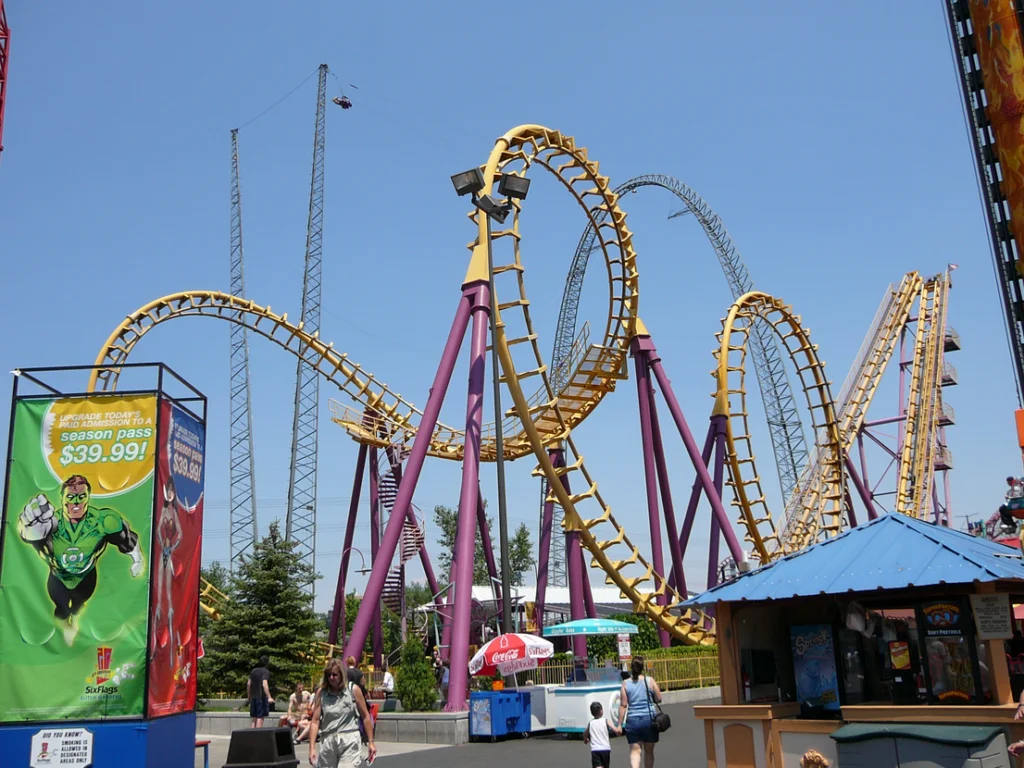
The original Elitch’s (not to be confused with its downtown Denver replacement) was a botanical wonderland that paired stunning gardens with thrilling rides in a unique combination that drew visitors from across Colorado. The “Wildcat” roller coaster became legendary for its intense lateral forces that threw riders against the sides of the cars, with single-position lap bars that did little to keep passengers in place during the violent turns. The “Troika” centrifugal ride featured spinning cars that occasionally made riders ill, creating a splatter zone nearby that park employees grimly joked about having to hose down multiple times daily.
The park’s historic Trocadero Ballroom hosted every major big band of the era and became the social center of Denver, while the Elitch Theatre was the oldest summer stock theater in America, launching numerous Hollywood careers. When Elitch’s closed its original location after 104 years, Denverites mourned the loss of this verdant paradise where generations had grown up riding the carousel, watching the famous diving bell performers at the pool, and nervously working up courage to ask crushes to join them on the romantic Sky Ride. Though the name lives on at a newer downtown location, those who experienced the original Elitch Gardens insist the magic could never be replicated, as the mature trees and lush landscaping that earned it the slogan “Not to see Elitch’s is not to see Denver” took a century to develop.
10. Kennywood Park, Pittsburgh (1898-Present)
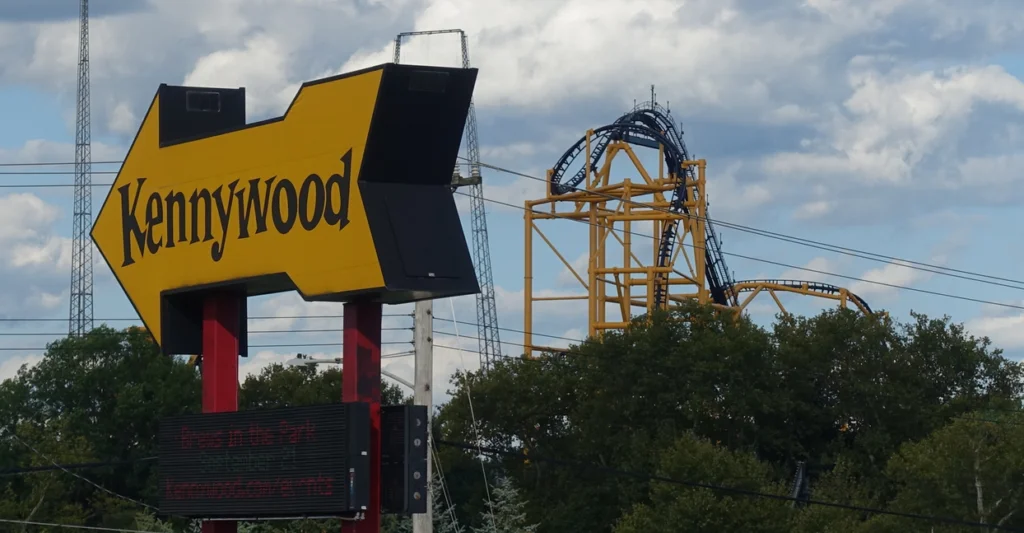
Though Kennywood miraculously survives today as one of America’s few remaining historic amusement parks, many of its most memorable attractions from the Baby Boomer era have disappeared, replaced by modern thrill rides. The legendary “Laugh In the Dark” ride featured sudden drops that sent flat-bottomed boats skidding across water in complete darkness, causing genuine fear that you might capsize at any moment. The “Tornado” whip ride slung riders around with such force that hats, glasses, and even shoes would go flying, creating a lost-and-found collection that workers called “the Tornado’s harvest.”
The original “Kennywood Racer” roller coaster (not to be confused with the Racer that still operates) featured two trains that appeared to be racing but actually completed each other’s track in a figure-eight pattern, creating a disorienting experience where you’d suddenly see the other train coming toward you in what appeared to be an imminent collision. Though the park continues operating, Baby Boomers lament the loss of original attractions like the Rocket, the Ghost Ship dark ride, and most notably the infamous Bubble Bounce, a simple attraction where powerful jets of air blew up women’s dresses Marilyn Monroe-style while men unabashedly watched—an attraction that would be unthinkable in today’s world but represented the different sensibilities of the era.
11. Playland, San Francisco (1926-1972)

This oceanfront playground at Ocean Beach combined breathtaking Pacific views with some of the most unusual attractions ever created, becoming San Francisco’s premier amusement destination. The “Big Dipper” roller coaster became notorious for its rough ride and alarming maintenance issues, with riders occasionally reporting seeing workers making repairs to sections of track shortly before their cars passed over those same spots. The “Fun House” featured the horrifying “Laffing Sal,” a 6-foot-tall mechanical woman whose maniacal, echoing laughter terrified generations of children—so traumatizing that many adult San Franciscans still report having nightmares about her decades later.
Playland’s “Diving Bell” took riders in a metal chamber below the surface of a water tank, creating a genuinely claustrophobic experience as water pressure caused the chamber to creak and groan in ways that convinced passengers a catastrophic failure was imminent. When Playland closed in 1972, much of San Francisco mourned what felt like the end of the city’s innocence, though Whitney’s Playland-at-the-Beach museum preserves artifacts including the infamous Laffing Sal, who continues to traumatize new generations of visitors with her disturbing cackle. The beloved “It’s-It” ice cream sandwich, invented at Playland in 1928, remains the only food item from the park that survived, now distributed nationally as a small taste of what was once San Francisco’s playground.
12. Coney Island’s Steeplechase Park, Brooklyn (1897-1964)

Though portions of Coney Island survive today, Steeplechase Park—the most innovative of Brooklyn’s beachfront amusement centers—has vanished entirely, taking with it some of the most unusual attractions ever created. The signature “Steeplechase Horses” ride featured individual mechanical horses mounted on rails that raced around the park’s perimeter, allowing riders to experience a simulated horse race with actual bumping and jostling between contestants. The infamous “Blowhole Theater” subjected exiting riders to unexpected air jets that blew women’s skirts up while audience members watched from stadium seating—a humiliation that would be considered harassment today but was accepted as part of the Coney Island experience then.
The “Human Pool Table” was exactly what it sounds like—visitors became the balls on an enormous felt-covered surface, being pushed around by attendants with giant cues while spectators observed from above. When Steeplechase closed in 1964, the property was purchased by Fred Trump (Donald’s father), who held a party where guests threw bricks through the stained-glass windows of the pavilion before bulldozing it—a symbolic destruction of old New York that many consider emblematic of the changing city. Though modern attractions have returned to portions of Coney Island, those who experienced the original Steeplechase Park insist nothing has ever captured the bizarre combination of thrills, humiliation, and architectural wonder that made it uniquely unforgettable.
13. Pacific Ocean Park, Santa Monica (1958-1967)
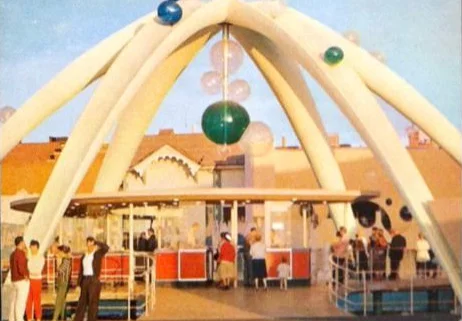
This ambitious “nautical wonderland” built on a pier extending into the Pacific Ocean combined futuristic design with seaside thrills, briefly becoming Southern California’s answer to Disneyland. The “Ocean Skyway” transported riders in bubble-shaped gondolas suspended over the actual Pacific Ocean, creating both breathtaking views and genuine terror as wind gusts would sometimes cause the gondolas to swing dramatically. The “Flying Dutchman” dark ride sent boats through the story of the legendary ghost ship, with a heart-stopping finale where boats appeared to crash through a window and dangle over the actual ocean below—a multisensory illusion so convincing that riders frequently screamed in genuine terror.
The park’s signature “Mystery Island Banana Train” transported visitors through a primeval jungle populated by mechanical dinosaurs and erupting volcanoes decades before Jurassic Park made such attractions common. Pacific Ocean Park’s rapid decline and heartbreaking decay—it sat abandoned for years with rides literally falling into the ocean—became a powerful symbol of faded Southern California dreams, inspiring artists and filmmakers including the Beach Boys (whose “Amusement Parks U.S.A.” referenced P.O.P.). The skeletal remains of the pier became a popular spot for teenage daredevils and surfers until fires and storms finally erased nearly all traces of this once-glorious park where midcentury futurism met the eternal power of the Pacific.
Those beloved parks may be gone now, but for Baby Boomers who experienced their unregulated thrills firsthand, the memories remain as vivid as yesterday’s visit. In an era before smartphones and virtual reality, these parks offered genuine, visceral experiences—where actual danger was part of the attraction and the worst thing that could happen wasn’t a dead battery but a bruised rib from a wooden coaster. The special magic of these vanished wonderlands lives on in the stories we tell, hopefully preserving for younger generations some sense of a time when summer meant testing your courage on rides that made you question your judgment even as you got back in line for one more wild adventure.


